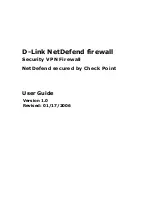
Battery Backup Mode
This section describes the impact on the router configuration and operating capabilities when the router
switches from AC power to BBU power.
BBU Capacity
The router supports up to three BBUs at one time. You should install as many BBUs as needed, up to three,
to meet your emergency power requirements.
If all installed batteries fully discharge while providing backup power to the router, the router will send a
dying gasp message and then shut down.
Router Configuration
The router software configuration is not impacted when the router switches from AC power to BBU power.
Universal Interface Module (UIM) Operation
By default, the Universal Interface Modules (UIMs) installed in slots continue to operate normally when the
router switches from AC power to BBU power.
You can configure the router to automatically power off specific modules when the router switches to BBU
power.
BBU Lifecycle Handling and Storage Guidelines
This section contains information about the BBU status and condition during the BBU lifecycle and how to
approach and manage it.
BBU Storage Related Definitions
• Shelf life—Shelf life is the length of time before a BBU needs to be recharged in order to avoid BBU
over-discharge.
• State of charge—State of charge (SOC) is the amount of charge on a battery and it is expressed as a
percentage value. For example, an SOC of 100% represents a battery that is fully charged, and an SOC
of 0% represents a battery that is fully discharged.
BBU Shipping and Receiving Guidelines
The BBU shipping and receiving guidelines define the BBU SOC status and how it can be managed at this
stage of the BBU life cycle:
• Cisco ships BBUs with a minimum of 60% SOC from the Cisco contract manufacturer (CM).
• Each BBU should have a minimum SOC of 50% upon receipt from the Cisco CM.
Installing Battery Backup Units
3
Installing Battery Backup Units
Battery Backup Mode

































